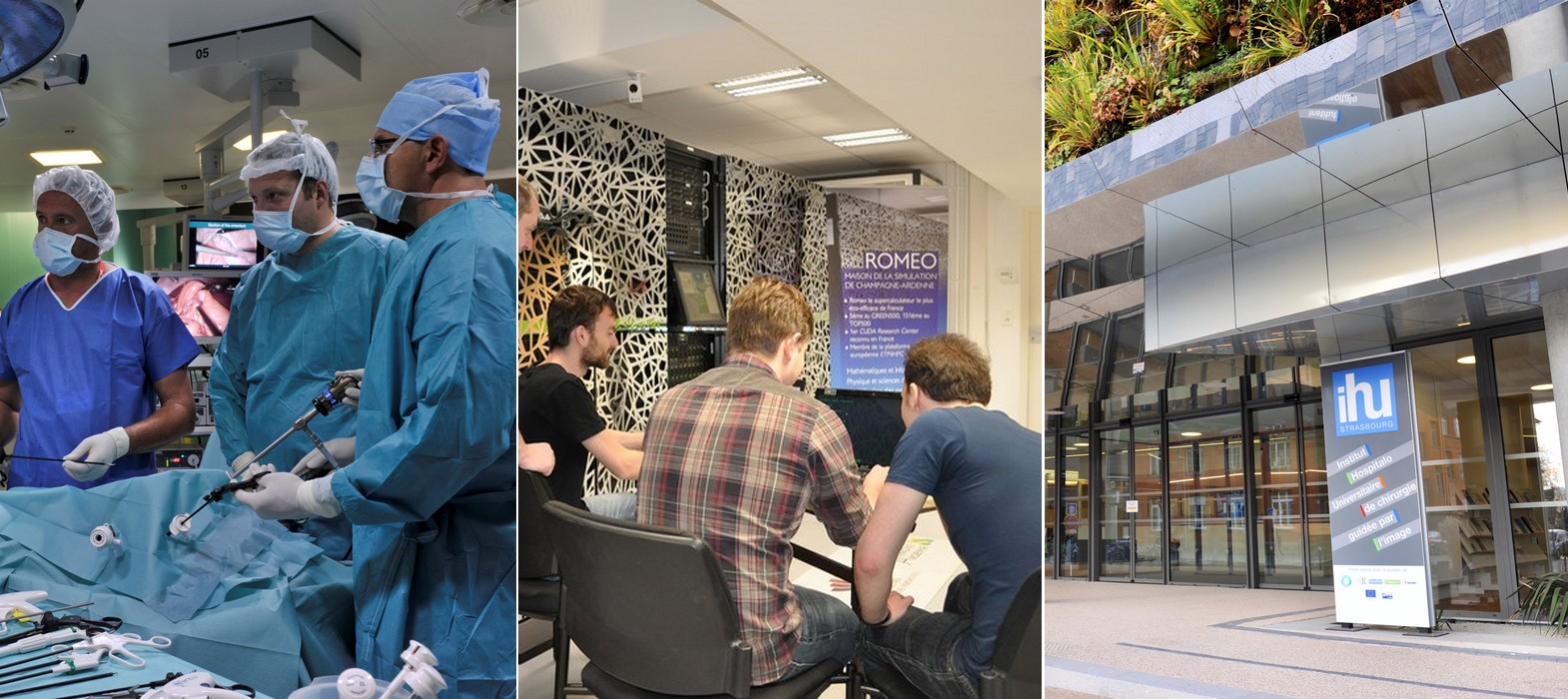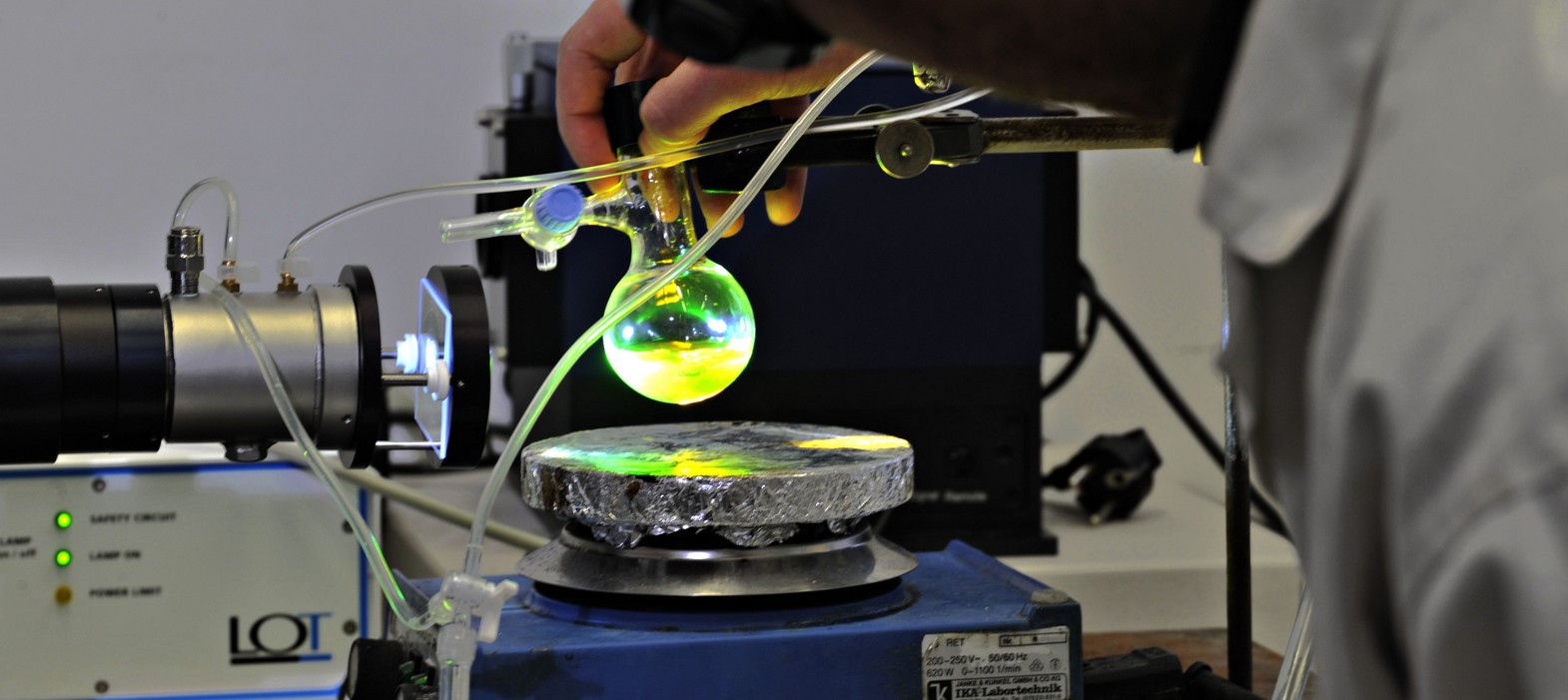Sommaire
Regional public research is particularly distinctive in two areas :
- Health: the multidisciplinary nature of medical research (genetics, cellular and molecular biology, neuroscience, oncology, imaging, etc.) and its structuring (competitiveness clusters), Canceropôle Grand Est, Next Med Campus/IHU, Hôpital Virtuel, IGBMC…) make the region one of the key players ;
- Materials and nano materials: shared research across the Grand Est is also a logical part of innovation and economic development (Pôle Matéralia, IRT M2P, Carnot MICA, ICEEL …). Worth noting in this area is the development of many skills in biosourced materials for food and non-food use that contribute to boosting the bioeconomy sector in the Grand Est.
Support for major infrastructures
- IHU Strasbourg : Institute of Image-Guided Surgery
Operational since 2016, the IHU brings together, in a unique place, researchers and clinicians from the best university, hospital and academic teams, around a unique clinical theme.
It supports training, research and economic activity in the field of biotechnology and medical technologies (HPC, CERBS, PH8, Haras Biocluster, PAPS-PCPI, Technoparc, Faculty of Dental Surgery, IRCAD, etc.) grouped together on the “NexMed Campus”.
This operation is co-financed by the Region, the ERDF, the Strasbourg Eurometropolis, the Bas Rhin Department and the IHU.
- IRCAD
Global reference and engine of economic dynamics on the university hospital campus, the Institut de Recherche contre les Cancers de l’Appareil Digestif / Research Institute against Digestive Cancer, was created to respond to the evolution of surgical techniques through digital. technology. It brings together surgeons, physicists, researchers, engineers and computer scientists on a single site with:
• a training school in minimally invasive surgery techniques, the EITS (European Institute of TeleSurgery),
• several basic cancer research laboratories and an applied research team on new technologies,
• WebSurg.com, the online surgical university with more than 370,000 active members.
- ROMEO: the Computing Centre of Reims
ROMEO Centre de Calcul / Computing Centre is a technological platform of the University of Reims Champagne-Ardenne thanks to the most powerful ROMEO hybrid supercomputer in France.
Its role is to provide industrialists and researchers with state-of-the-art computing resources, secure storage spaces, adapted software, support in the use of these tools as well as expertise in advanced scientific and technical fields, high performance computing, applied mathematics, physics, biophysics and chemistry.
Its goal is to rapidly process large volumes of digital data, handle complex applications, and contribute to the region’s scientific competitiveness.
Since 2011, the Region has financed ROMEO to the tune of €900k, in addition to €1.28m of ERDF and €1m of regional investment funds under the State-Region Plan Contract.
- INSTITUT JEAN LAMOUR in Nancy
The Institut Jean Lamour (IJL) is a basic and applied research laboratory in science and engineering of materials and processes that brings together 550 multidisciplinary scientists covering materials, metallurgy, plasmas, surfaces, nanomaterials and electronics.
The IJL is a joint research unit of the CNRS (attached to the Institute of Chemistry) and the University of Lorraine with 23 research teams organised in 4 scientific departments.
The main site of the IJL is located in Nancy in a new building of 28,400 square metres on the ARTEM transdisciplinary campus. It works alongside Mines Nancy, Nancy National School of Art and Design and ICN Business School.

A region resolutely turned towards Europe and the world
The Grand Est region has long been sharing structured cooperation between academics and researchers from neighbouring countries:
EUCOR-The European Campus, on the way towards the first European university
As part of the structuring of the 5 universities* of the Upper Rhine, the EUCOR-The European Campus project aims to become an international centre of attraction. It brings together the skills of 15,000 teacher-researchers, 11,000 doctoral students and 115,000 students in order to constitute an integrated scientific research space without borders.
*Germany : Albert-Ludwigs-Universität Freiburg , Karlsruher Institut für Technologie
Switzerland : Universität Basel
France : University of Haute-Alsace, University of Strasbourg
University of the Greater Region (UniGR)
It is a continuation of the partnerships already established between the 6 universities of Lorraine, Liège, Luxembourg, Saarbrücken, Kaiserslautern and Trier and represents 115,000 students.
Its main objectives are access to student courses and services, the strengthening of training provision and cross-border cooperation, the networking of scientists, the provision of rare equipment and close cooperation in training of doctoral students.
The Offensive Science (OS) programme
The OS is a unique support system in Europe, initiated in 2011 jointly by the Région Grand Est, the German states of Baden-Württemberg and Rhineland-Palatinate with the European INTERREG V Upper Rhine programme. By contributing to the financing of concrete and common projects, the OS aims to make the Upper Rhine a model region, a laboratory for European integration in the field of research.

